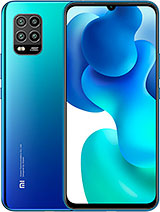Xiaomi Mi 11 Lite 5G UNBOXING and DETAILED REVIEW - World's FIRST Snapdragon 780G Powered Smartphone By TechNick
This is not only the world's thinnest 5g smartphone, but the world's first mass-produced smartphone to incorporate Qualcomm's first mid-range, 5, nanometer, processor technology, driven chipset, the snapdragon 780 g, and it does so at a very low price. This is my unboxing, an extremely detailed review of Xiaomi's brand spanking new budget friendly device. The 11 lite 5g, in which I'll be comparing it to other devices within the Xiaomi family tree as well as testing out its design, display cameras, software, dual stereo speakers, 90fps, gaming and finally benchmarks. We get a type c to headphone jack adapter in the box, which means that there is no earphone jack on the phone itself. We also get a silicon case and, of course, the device itself. Furthermore, we do indeed get a cable in the box that being a type a to type c cable, as well as a 33 watt charging block in the box, and, yes, it can charge at 33 watts, so that's it for the contents of the box.
Thankfully we get everything in there so without further ado, let's go ahead and unwrap this guy. This is the truffle black color version of this device. You can also pick it up in mint, green or citrus yellow. You can get it in different colors. If you go for the 11 light, not the 5g model, but this is the 5g model.
It has a better chipset in it and, of course, 5g capabilities as well. I really like this matte black finish at the back. It looks very classy underneath the hood. We get a 4 250 William hour battery 33 watt charging, NFC, Wi-Fi 6, Bluetooth, 5.2 and IR blaster, as well as gorilla glass 6 on the front with a plastic frame and an impact resistant back glass. It picks up pretty much no fingerprints.
Much as though we do still get that silicon case in the box, not the most incredible case around, but it still does the job if need be on day one. We have a power button on the right hand, side mixed up with a fingerprint sensor, a non-split volume, rocker and IR blaster on the top, as well as dual sim 5g slots over there, which can pop in a micro SDC slot, though it replaces some slots too. We do have a type c port at the bottom, which is 2.0 transfer speeds, and we do have dual stereo speakers here, one being within the top earpiece the camera module at the back. Isn't that hefty a lot smaller than other Xiaomi devices around, especially the note 10 pro. So when it's on a flat surface, it doesn't really give off much of a wobble effect, which is always an extra little bonus and when comparing the design to other Xiaomi devices run, I really do like the matte black finish at the back very similar to the matte finish of the flagship me 11 series: I'm not the biggest fan of glossy devices, and it is so darn thin at 6.81 millimeters, and it's so darn light at 159 grams for the 5g variants and 157 grams for the 4g variants. We have a 6.55 inch, full HD AMOLED display with 10 bit color 1 billion colors, that is 800 nits of peak brightness, 90 hertz, refresh rates and 240 hertz touch sampling rate, so it's nice and comfortable in the hand not too large, not too small, either and when comparing it to other devices around all of them with AMOLED panels over here, the color accuracy is on par with the rest of them and even though it's not quite as bright on paper, I still feel like it is just as bright in reality. Even when outdoors you can see, the white balance is pretty much on point, comparing it to all other Xiaomi devices around over here.
The k40 is also known as the Poco f3, which recently got announced, so you can refer to that one as the Poco f3 here on out going forward. We do have 90 hertz over here compared to the 120 hertz on the rest of the Xiaomi devices, and I've said it so many times before.90 hertz is the sweet spot at 90, hertz and HD plus would actually definitely be the sweet spot. But since this is such a budget friendly phone, we're missing that feature over here, we have a couple other settings that we can tweak with, such as a color reproduction within the settings as well as brightness. And, of course there is dark mode as well, which you can use to dim your wallpaper when enabled or keep it bright if you'd like, and we can also use it within third-party apps and, of course, all first-party apps as well. We can also enable the always-on display, thanks to this being an AMOLED panel over here, and we get all the nice little animations when using the always on display, like the kaleidoscope that you see over there with Xiaomi devices they're all here and the color shifting one throughout time, which is great, but unfortunately, now under display fingerprint sensor.
Something that Xiaomi is shifting to here is the oxide fingerprint sensor within its budget friendly devices. It is pretty much exactly the same as all recently released budget friendly, Xiaomi devices, and it is nice and snappy. I must say they have done a superb job. With this oxide fingerprint sensor, it's even a little. Snappier than the me11 one, which is optical, underneath the display we also have 2d face unlock.
It is not very secure, though it is still on par in terms of speed compared to its Xiaomi brothers and cousins over here doing a great job in terms of unlocking your device rapidly, but slightly less secure than using the fingerprint sensor at the front. We do have a 20 megapixel, selfie snapper and the mi 11 light.4G version only has 16 megapixels selfies come up nice crisp and clear, and there is minimal edge detection when it comes to taking portrait shots. This is tech, neck recording, a 1080p at 60 frames per second selfie video on the brand new Xiaomi mi 11 lite 5g. Yes, that's right. It can record 1080p at 60 frames per second, that is the max no 4k, but thankfully we do have 60fps.
If you heard anything in the background, it was some tweeting birds. At the back. We have a 64 megapixel main sensor, which is laid with six layers of plastic. It has an aperture of f 1.79 and can be been down to 16 megapixels, and we also have an 8, megapixel, ultrawide sensor and, of course, a 5 megapixel tiller macro lens, while the ultra-wide sensor isn't the best I've seen the main 64 megapixels, shot, looks great. Putting it down using AI, looks even better with colors popping everywhere.
We can also zoom in with the 64 megapixel main, and we can zoom in with it binned and enabled AI over here, which looks even better five times. Digital zoom doesn't look the best and 10 times is the max zoom, which isn't very good. If you ask me, we do have that macro sensor, and it does a great job, nice up close and personal and of course we can also get an AI enabled portrait effect here, which does a pretty great job, with barely any edge detection whatsoever. We do have a 4k at 30fps video recording using the backhand, and we have a gyro electronic image stabilization here. Things are nice stable and steady, unfortunately, no 60fps option for 4k, though we do have it for 1080p.
We also have 1080p at 30fps, using an AI mode over here, still using electronic image stabilization. It makes the colors pop a little more though I don't think the detail is quite there as without using the artificial intelligence. You can also record at ultrawide, though it is capped at 1080p and 30fps. I would have liked to have seen this at 60fps, since the selfie can even record at 60fps. The ultrawide should as well.
Ultrawide can also shoot with AI enabled keeping things at 30fps, making the colors pop even more once again. Steady video mode is another option over here and enabling that it is capped at 30 fps once more, but it keeps things nice and steady. It does dip in quality and color. Once you are in the phone you're welcome to Xiaomi's mini 12. , unfortunately, no mini 12.5 as of right now, but we should be getting an upgrade on this device relatively soon so stay tuned. For that one mini 12 is like we've come to know and love in the past year.
It has all the great features that you've come to enjoy, such as multitasking, as well as having those little mini windows and floating windows doing things on the fly all at once and the snapdragon 780 chipsets is no slouch, so it doesn't sweat whatsoever when doing all these crazy things just jumping between your different screens when using the software and of course, we also get welcomed to those great Xiaomi wallpapers from mini 12, as well as those amazing super wallpapers, such as the red planet, one over here, which has a three-phase transition. We also have Google rooted straight into the settings with play store on the home screen as soon as you boot it up for the first time, and we can use Google Assistant as well as these haptics being absolutely superb. We also have dual stereo speakers here, paired with Xiaomi's sound effects, but how does it compete against the Redmi Note 10 pro and Xiaomi mi 11. Wind blade? What do we have here? The snapdragon 780 g chipset is the star of the show here. It is supposedly 40 faster than its previous generation snapdragon 765 g chipset.
Remember the mi 11 lite 4g version is running on a snapdragon 732 g. So if you want this wonderfully new five nanometer tech driven chipsets, the 780 you're, going to have to opt for the me11 light.5G, like I have over here running gentian impact with absolute max settings, does a superb job. Remember the game is capped at 60fps, and we're getting around a 4243 fps most of the time which is fantastic for a mid-range chip. But remember it's quite beefy for what it is. They're saying that it's pretty much on par with last year's flagship, chipsets and running PUBG mobile, no 90fps option, though that is limited to smooth graphics.
We want the best graphics that we can get, which limits the game to 60 fps, and we're sitting at a rock solid 60, which is great bullet force, is another game that has no frames per second cap, and we're getting a solid 90 fps, and this game is quite demanding and taxing in terms of GPU. Another game that has an unlimited frame rate is dead, trigger 2, also sitting at a nice and steady 90 frames per always second good. To see straight out of the box, the snapdragon 888 processing chips, the flagship one from Qualcomm this year, was struggling a bit with many of these games hitting the unlimited frames per second cap over there, and real racing is one of them on this phone that cannot quite reach 90 fps, but I'm pretty sure the devs will fix that in the coming weeks. So how does that snapdragon 780 g chipset score in a couple benchmarks. First, we're going to check out the battery percentage as well as its degrees in Celsius at the start, and we'll compare this at the end, we're going to be rocking an tutu version 9 over here.
For the second time on my channel, the last one was my previous unboxing, we'll compare them at the end to other smartphone chips around within its same price segments. We're running geek bench 5.3.2 over here, but like many Xiaomi devices before it keeps crashing. So I couldn't get a result of here I'll be sharing the online results and, of course, we have 3dmark wildlife, which I did manage to get through battery drain at the end, went eight percent down and got a rating of 16.2 William hours per minutes, which is fantastic, not to mention it kept pretty cool, only adding 7.8 degrees in Celsius. When it comes to an tutu version, 9 results, we got a massive score of 525 664 points which is well above its previous generation chipsets, like I mentioned it, kept crashing when trying to run geek bench 5.3.2, but I did see an online score of 862 single core and 2209 multicore, which once again trumps its predecessor, chips and, last but not least, 3dmark wildlife is very taxing in the GPU department and with that wonderful new, arena 642 integrated GPU we're getting a fps county of 18.8, which makes it 50 percent better than last year's snapdragon 765g, the Xiaomi mi 11 lite 5g is a fantastic device for its price. It has a premium matte black finish: layered within impact resistant back glass, a familiar looking camera setup that takes crispy, clear, main stills, but falls short with ultrawide and zoom shots, which in turn is forgiven.
At this price point it is the thinnest and lightest phone I have ever tested at just 6.81, millimeters and 159 grams respectively, and when you flip it over, you are welcomed to a comfortably sized screen at 6.55 inches, which still packs a punch with vibrant 10-bit color on an AMOLED display, not to mention it has a silky smooth, 90 hertz, refresh rate which, when paired with the almighty, 5 nanometers, snapdragon 780g chipset runs games at a true flagship level, but it's not alone amongst many others. Within the Xiaomi family tree and while the recently released Redmi Note, 10 pro boasts in camera and battery, it can't compete with the performance of the mi 11 lite 5g, not to mention its 5g capabilities and the Redmi k40 pro is a worthy contender, but it's currently only available in mainland china. The Redmi k40 aka Poco f3 drops the ball in the camera department, but boasts in extra performance, which may prove more favorable for some, but bear in mind. It is running on older 7. Nanometer architecture performance is also a strong suit for the flagship me 11, alongside better optics, a HD display and wireless charging.
But let's not forget how much more expensive it is compared to its little brother, its little brother. Being the 11, lite 5g is a fantastic device filled with all the goodies. You could ask for packed into a slim and light bulb, making it one of my favorite mid-range smartphones of 2021. You.
Source : TechNick



























